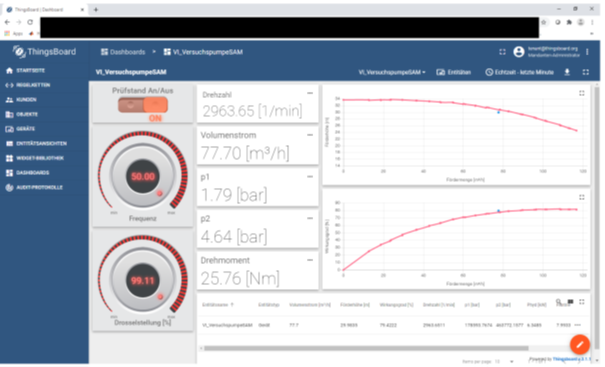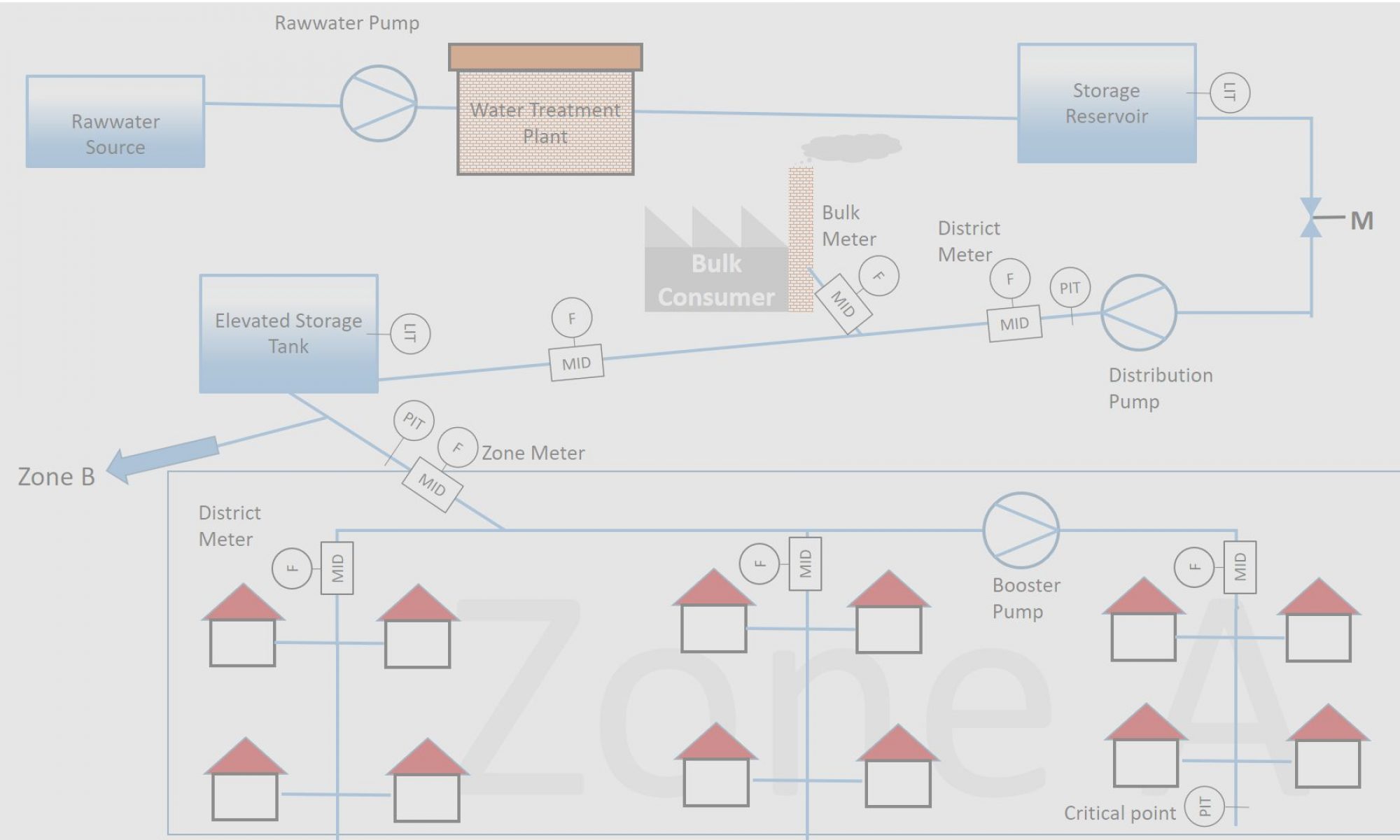Due to contact restrictions in the COVID19 pandemic, laboratory experiments could not be conducted in presence. For this reason, the technologies developed in IoT.H2O were used for the first time in the summer semester of 2021 to conduct virtual laboratory experiments. For this purpose, the students were given access to the dashboard created in the IoT platform for controlling the centrifugal pump for a certain period. This meant that the experiments could be carried out online. To avoid the risk of faulty operation and the need to supervise the test stand, a digital twin of the centrifugal pump was developed, which was operated via the dashboard of the IoT platform instead of the real pump. This digital twin realistically reproduces the operating behavior of a centrifugal pump and the drive motor.
The students were able to use it to determine the characteristic curve of the centrifugal pump, simulate different systems and investigate the differences between throttle and speed control.
In addition to avoiding the presence required to comply with contact restrictions, there are other advantages to the digital laboratory experiment. Up to now, the tests were always carried out in groups due to time constraints. As a rule, one or two students were then able to operate the test stand and record some measured values. The other participants had to watch. At the end of the experiment, all participants were provided with a complete data set of the measured values for the preparation of the laboratory report. Through the digital lab experiment, each participant can conduct the experiments themselves and record their own measurement data. This contributes to a deeper and better understanding of the operating behavior of centrifugal pumps and enables the students to analyze pumps operation in systems and to design them in an energy-efficient way. Another advantage is that by using a digital twin, other turbomachinery that are not available in the laboratory can also be studied in digital laboratory experiments. That way another experiment with a positive displacement pump has been developed.

Of course, the digital experiment does not replace the inspection of the test stand, which gives the students a better impression of the set-up of the test stand and the equipment used. Therefore, both concepts will be pursued in the future, also because of the very positive feedback from the students.
